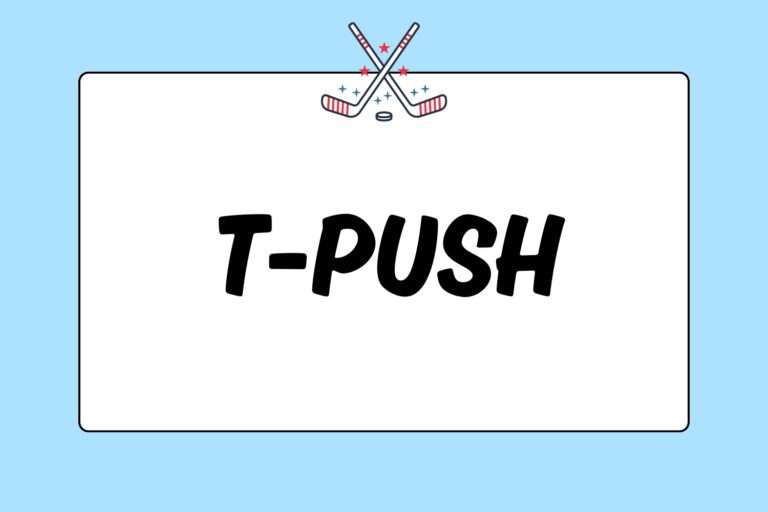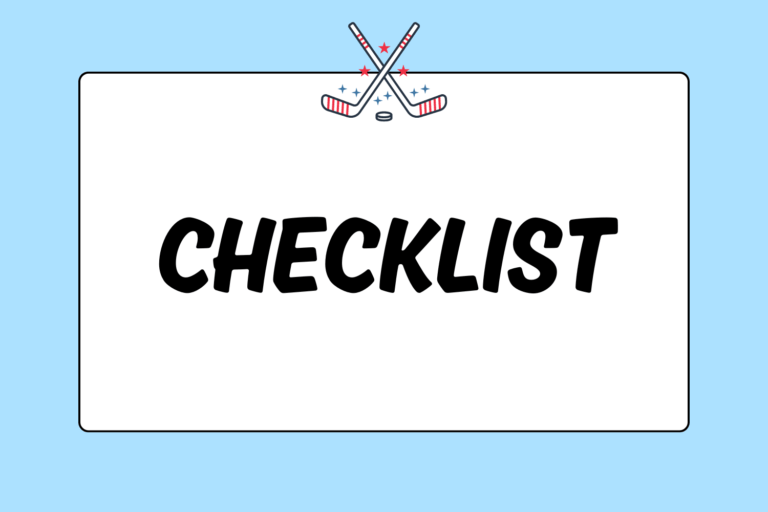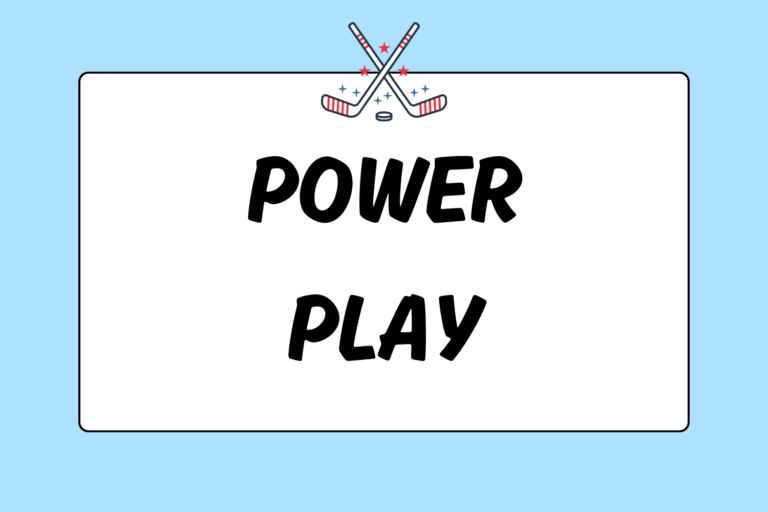Almost any kind of injury can occur in hockey. Every week during the NHL season, there are numerous different reports about a star player going down with a torn knee ligament, a bad back, a pulled hamstring, or a sprained ankle. The injuries range in severity from minor annoyances to serious and career-threatening. Hockey is a physical, high-speed sport, and injuries (at all levels) are simply part of the game.
Here is a brief description of some of the more serious and most common injuries that occur on the ice, along with information on how to prevent them:
Head, Neck & Back Injuries
Spinal Cord
Rinks throughout North America often post little signs that read “Heads Up, Don’t Duck.” These signs usually feature a cartoon-like drawing with big, colorful letters designed to grab the attention of hockey players at the youngest levels. Reading and understanding this sign is probably one of the most important lessons a young player can learn, as the message is there to help prevent spinal cord injuries.
Neck and back injuries have always been associated with hockey, but it wasn’t until Travis Roy’s unfortunate accident that players around the world truly became aware of potential dangers on the ice.
Roy was in his first season, first game, first shift even, with the Boston University men’s hockey team in 1995, when he suffered an injury that ended his career. The freshman crashed into the boards head first, cracked his fourth vertebra and became paralyzed from the neck down.
The only positive that came from Roy’s accident was that it opened discussion and awareness in the hockey world about the reality of such injuries. Roy has since become a motivational speaker and created a foundation in his name that helps support spinal cord injuries and research.
This case reminded hockey players around the world that spinal cord damage—although very uncommon—can occur in this sport. It is important to take the proper precautions to prevent greater risk.
Prevention
As the sign says, keep your head up and don’t duck.
A player’s initial reaction to a fall, or when sliding into the boards, is usually to drop the head to protect the face. But while it may seem awkward at the time, the proper way to go into the boards is face first, with your head straight up.
This position gives the neck full flexibility, which in turn, protects the spinal cord. If you hit the boards with your head down, the spine stays straight and is more vulnerable to compression upon impact – which increases the chance of damaging one or more of the vertebrae. That kind of damage can lead to paralysis.
Try to use your hands or arms to shield your head during a fall. If you can’t get them free in time, use the heads-up technique any time you slide into the boards, goal post or another player. It is difficult to react in such a short amount of time, especially when the body’s natural reaction can be to drop the head. However, you need to train yourself to respond correctly. Just remember “heads up, don’t duck.”
Concussions
A concussion is a blow to the head that causes the brain to make contact with the interior of the skull. This can lead to loss of consciousness, bleeding on the brain, and in the long run (and after many, many concussions), loss of memory.
These injuries are much more frequent in advanced levels of play, but that does not mean that beginners are not at risk. And one of the worst parts about concussions is that once you suffer one, the more you are at risk to suffer more.
Prevention
The most obvious form of protection against a concussion is to wear a properly padded helmet. However, concussions can still occur while wearing a helmet, so it is always important to be aware of your surroundings and keep your head on a swivel. Skating with your head down invites an opponent to check you and can easily lead to a head injury.
The Rest…
Knee joint
Knee injuries are common in hockey because of the constant changing of direction. Tears, sprains, and strains are frequent, especially for one of the most vulnerable parts of the knee – the menisci.
The menisci are wedge-shaped pieces of cartilage located on top of the tibia (shin bone) in the knee joint. Whenever there is damage done to the ligaments – the medial collateral ligament (MCL) or the anterior cruciate ligament (ACL) – there can also be damage to the cartilage in the knee. The menisci can also be independently injured, usually as a result of blunt force to the outside of the knee.
While less common, damage to the ligaments mentioned above (the MCL and the ACL) is often more serious than a cartilage injury. Sprains to the MCL often occur when a player’s skate is planted with the knee bent before blunt contact, or when a player goes into the boards or collides, knee-to-knee, with another player. The worst damage is a Grade 3 MCL sprain, which usually means the ligament was completely ruptured and can require months of recovery time and rehabilitation. Tearing of the ACL can also occur under the same conditions and is just as serious as a Grade 3 MCL sprain.
Prevention
Keep yourself physically fit all year round. These injuries tend to occur in the beginning of a hockey season, when players become fatigued quicker. Once the muscles tire, the tendons and ligaments around the joint have less support, which makes them more vulnerable to injury. So during the offseason, try to stay in shape. And before games or practices, stretch and flex the knees by doing leg extensions and leg presses.
Hamstring
Hamstring injuries are common in almost every sport, and hockey is no exception. The constant bursts of speed put a lot of pressure on the back of the legs and the three hamstring muscles that make up much of that area. The damage can range from slight inflammation, to a minor tear, to a complete rupture – though the latter is somewhat uncommon.
Prevention
The best prevention for hamstring injuries is similar to the advice for knee injuries: Stretch, stay in shape and get a proper warm-up before a game or practice. Again, a player who is well conditioned and properly warmed up will usually have less of a chance of getting injured. Leg presses and any type of static stretching are old-reliable exercises that should help in this area.
Shoulder
While falling to the ice or skating into an oncoming player, a player’s natural reaction usually is to reach out with the arm to break the fall. The heavy impact to that shoulder or arm can cause an anterior dislocation, when the top of the humerus bone (the upper arm bone) is forced out, away from the shoulder.
If this does happen, the bone should be popped back into place as soon as possible by a medical professional.
Prevention
Because the shoulder is a joint, the information in the prevention section for “Knee Joint Injuries” relates to shoulders, as well. Special exercises/stretches that can help prevent shoulder injuries would be anything that involves rotation or flexion – like pull-ups, chin-ups, or dips.
Ankle
Skates are designed to protect against sprained ankles, but since players are constantly changing direction on a slippery surface, the ankles still remain vulnerable. Sprains occur when the foot turns either too far in or too far out from the normal range, which stretches the ligaments on the outside or inside of the ankle.
Many ankle injuries are of the Grade 1 variety and can be healed if the player simply walks them off or uses a combination of icing and elevation. The severe sprains—Grade 2 or 3—involve a tear of the ligament or tendon and can lead to heavy rehabilitation and long recovery periods.
Prevention
Again, staying in shape during both the season and the offseason is the best way to avoid this type of injury. A simple exercise to use would be calf extensions. And remember, the ankle is also a joint, so regular ankle rotations or flexions with resistance bands would work, as well.
Have no Fear
This above information was not meant to deter a potential player or a potential player’s parents from giving hockey a try. The bottom line is that injuries occur in every sport. Yes, hockey is played at a pace that is much faster than most sports, but that is also part of what makes it such a dynamic and fun sport. Learning about these injuries is the first step towards prevention so that you or your child can play the game with a worry-free attitude.





